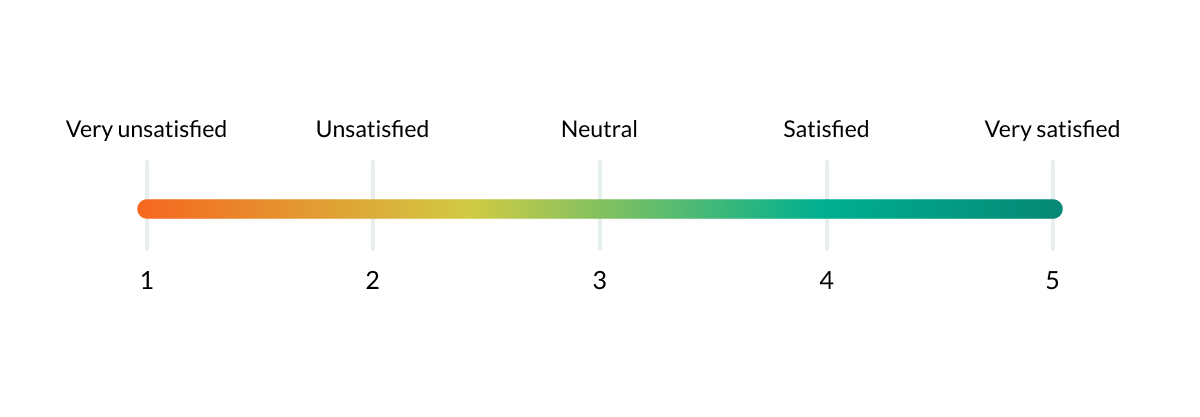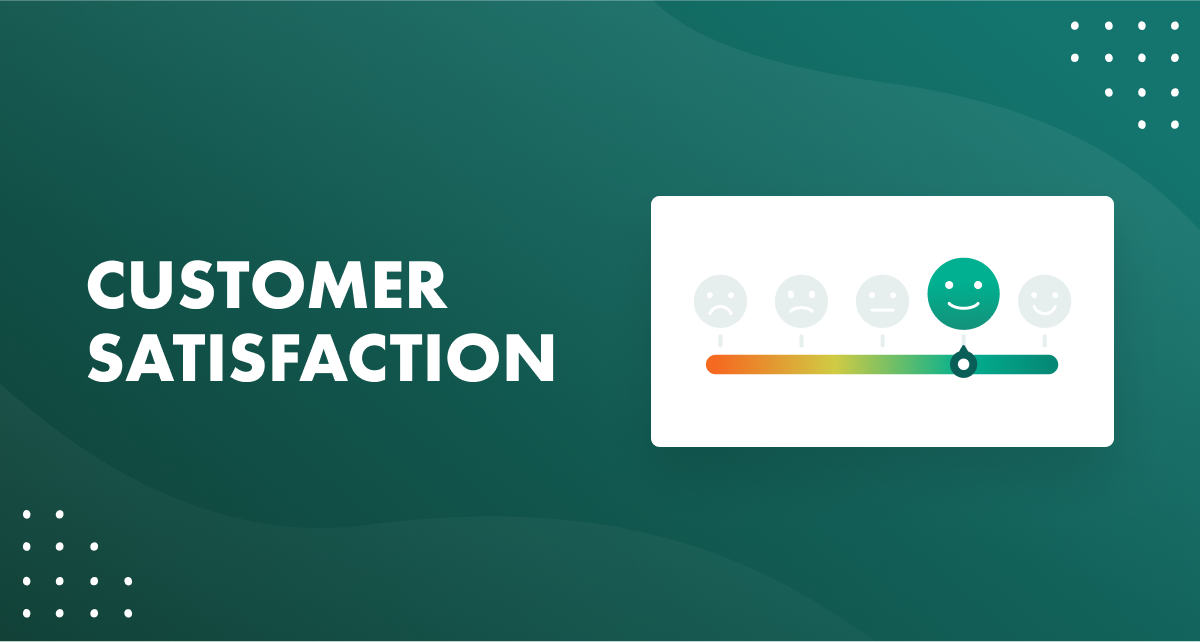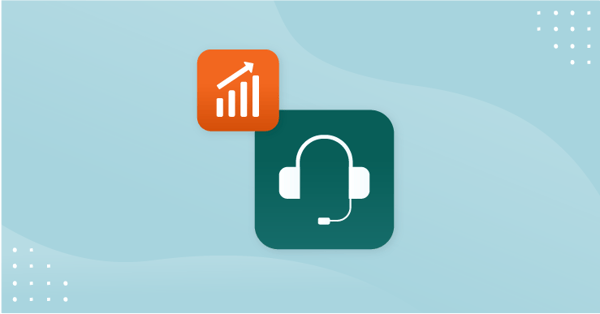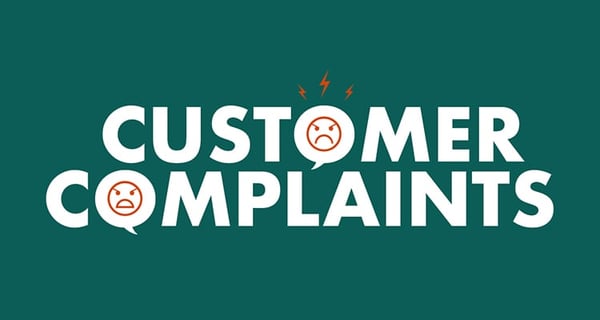“If you don’t take care of your customer, your competitor will,” Bob Hooey – a famous inspiration speaker once said.
Taking care of your customers is the best way to keep them. But just keeping customers is not enough. You must ensure they are happy with your product. And for that, you need to take an active interest in customer satisfaction levels.
Easier said than done
In our recent report on the state of European B2B customer service, we found out that although 80% of customer service teams view increasing customer satisfaction as their main objective, they do not use customer satisfaction as their KPI. Instead, many measure Service-Level Agreements (SLAs).
As you can see – there’s an obvious disconnect between the main objectives and the main metrics used.
The two metrics are related, so there’s no major cause for concern. However, our data also revealed that a shocking number of companies do not even measure customer satisfaction – thus making it impossible to tell if their customer service team is fulfilling its main objective.
In other words – the objective is clear, but the method to measure it is either different or absent.
This got us thinking: why do so few B2Bs in Europe measure customer satisfaction by making the CSAT their key metric? 🤔
However, before we look for that answer, let’s start from the very beginning: what customer satisfaction in B2B is, how to measure it, and why it matters.
Methods, metrics and measures
B2B organizations are notorious for lagging behind in the customer experience ratings. Typically, B2C companies score 65-85%, while B2B companies average less than 50%.
This means that B2B organizations should make more effort in making their customers happy. Yet, nothing can be done without assessing the situation at hand. And for that you need a measuring system!
There are many ways for B2B companies to measure customer experience, and in particular customer satisfaction. They fall into two main categories: customer feedback and customer metrics analysis.
🗣️ The customer feedback is one of the easier and most obvious ways to evaluate whether customers are satisfied with the experience you offer. Among the classical methods are surveys, social media comment analysis, and check-in calls. All of them have their pros and cons, in terms of ease of use, time investment, subjectivity factor, etc.
🌡️ The most popular customer metric analysis methods are Service-Level Agreement (SLA), Net Promoter Score (NPS), Net Value Score (NVS), Customer Effort Score (CES), and Customer Satisfaction (CSAT). These metrics help companies get a more detailed picture of their customers’ thinking about your product, your services and even communication style.
Practical benefits of measuring customer satisfaction
Customer satisfaction, as the main facet of a positive customer experience, is rapidly gaining weight in strategical B2B minds.
Almost half (45.9%) of B2B professionals said customer experience is now their top priority for the next few years, beating such things as pricing and product. And 89% of businesses compete primarily on the basis of customer experience.
While it’s quite obvious why customer satisfaction is crucial to the success of B2Cs, why is it also important for B2Bs?
To answer this question, we talked to the experts who singled out a few main benefits.
LOYALTY & SUSTAINABLE GROWTH
“Customer satisfaction in the B2B sector is vital, as satisfied customers are more likely to remain loyal, make repeat purchases, and recommend other businesses, contributing to sustainable growth and profitability,” states Kyle Roof, co-founder of High Voltage SEO and co-creator of Page Optimizer Pro.
EMOTIONAL CONNECTION & REFERRALS
“Improving customer satisfaction compels customers to develop an emotional connection to the company resulting in long-term brand loyalty. Studies have shown that customers with such an emotional connection are often less price sensitive and are more likely to recommend your B2B offering to others,” says Ben McInerney, the Founder of GoTreeQuotes.
PROBLEM SOLVING & CHURN PREVENTION
“Customer satisfaction facilitates problem-solving, prevents churn, and identifies loyal customers who will become your advocates. It plays a key role in the process of increasing customer loyalty, improving overall customer experience, and increasing word-of-mouth marketing,” thinks Mocca Bajao, Digital PR Specialist at Thrive Digital Marketing Agency.
MEETING EXPECTATIONS
“Customers in the B2B sector tend to be more critical of your offerings and services. If you provide them with a substandard product or service, you can expect them to tell their colleagues about their experience. To keep your B2B customers satisfied, you must always strive to meet their needs and exceed their expectations,” argues Matthew Ramirez, entrepreneur and investor, Director at Rephrasely.
REVENUE PREDICTION & BUSINESS GROWTH
“A customer who does not like your products and services won't purchase them again. And if your customer's lifetime value is low, you'd miss out on potential revenue streams. Not only is customer satisfaction a great indicator of customer expectations and purchase intentions, but it also helps predict revenue and business growth,” claims Cayla Thurman, Business Reputation Consultant at Rize Reviews.
So, what’s the best way for B2Bs to measure customer satisfaction?
Deciphering the power of CSAT
The metric used to measure customer satisfaction is called CSAT, often used by businesses as a KPI to find out how satisfied their customers are with their products or services.
The metric is pretty simple and comes in a form of a question that (give or take) sounds like this: “On a scale from 1 to 5, how would you rate your overall satisfaction with the [goods/service] you received?”
The 1 stands for “Very unsatisfied”, followed by “Unsatisfied”, “Neutral”, “Satisfied”, and 5 stands for “Very satisfied”. Then, all the positive responses are divided by the total number of responses and multiplied by 100 – this gives the CSAT percentage where 100% stands for “total satisfaction”, 0% means “total dissatisfaction”.

PROs 😊 CSAT is not only easy to use and measure, but it also helps analyze specific parts of the customer experience. For example, you can rephrase the question: “How would you rate your overall satisfaction with the helpfulness of customer service agent / shopping assistant/ ordering process / delivery?” It’s engaging, flexible in its form, and usually generates high response rates.
CONs ☹ CSAT measures the “here and now” reaction to a specific interaction, product or event, but it may not dig deep enough when it comes to measuring a customer’s ongoing relationship with a company. Also, a certain degree of subjectivity may affect the result.
Weighing the contenders: NPS, CES and SLA
There are many methods to measure customer experience with your brand – most of which are rather simple and easy to use.
Let’s take a look at the main rivals of CSAT:

Same motivation vs. different measuring methods
Going back to our initial question – why so few B2Bs measure CSAT in customer service, and instead opt for SLAs – there seem to be a few explanations.
But all of these explanations rest on the fact that all the metrics used by B2Bs share the same underlying motivation: to improve customer satisfaction. Yet, the method and measuring focus are different.
Here are some reasons to why B2Bs don’t include CSAT to measure their customer service efforts:
Lack of benefit awareness
B2Bs prioritize customer satisfaction, but don’t use the CSAT metric, due to a lack of awareness or understanding of the metric’s benefits. They seem to not see the true value of CSAT.
“Incorporating CSAT into their performance measurement can provide a more holistic view of customer satisfaction and help identify areas for improvement,” thinks Kyle Roof.
Other metrics fit better with the business model
Some companies may prefer other metrics like SLAs that align more closely with their specific goals and objectives. The SLA model is rather straightforward and legally binding. It allows companies to do what was promised. Yes, this will help them keep their promises and meet the established expectations, but it will hardly help them exceed expectations.
Lack of resources
Some B2B companies measure SLAs instead of CSAT because they may not have the resources or capabilities to analyze their customer feedback in-depth.
“Focusing on SLAs as a metric allows B2Bs to easily compare the performance of different vendors and services. However, measuring customer satisfaction is still essential since it provides a more comprehensive understanding of the customer experience,” claims Serbay Arda Ayzit, Digital Marketing Expert.
Conclusion
Customer satisfaction is a critical B2B metric. It shows the extent to which a company's products or services meet or exceed the expectations of its customers.
It’s simple: if you're not providing good customer experience, you're failing to meet your customers' needs. And the customers may churn. If you provide good but not great experience, you’re not exceeding customers’ expectations. They may stay but won’t refer you to others.
Since there are many methods to assess your customers’ experience, it’s best to incorporate both SLA and CSAT into your B2B measurement strategies, and this way ensure a more accurate evaluation of customer feedback, as well as make data-driven decisions about your customer service offering.
If B2B companies want to avoid creating communication gaps with customers, and build strong and long-lasting customer relationships, they need to include CSAT in their metric pool. “This metric will help them obtain straight answers from customers regarding how they perceive the B2B solution,” says Simon Bacher, CEO and co-founder of the Ling App.
Want to learn more about the state of customer service among European B2Bs? Then download our newest European B2B Customer Service Report!




